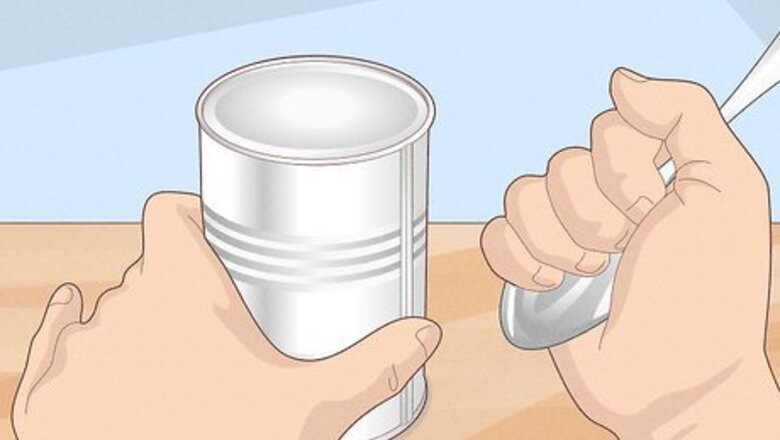
views
- The easiest and safest way to open a can without a can opener is by rubbing a metal spoon around the top edge of a can lid until you pierce through the thin metal.
- Rubbing the top of the can on a rough surface (like a rock or a slab of concrete) can also work in a pinch to wear away the lid seal and free your food.
- You can also use a sharp object like a knife or screwdriver to puncture the can lid multiple times until the lid can be pried free. Take extra care when using sharp objects to prevent injuring yourself.
Best Method: Using a Spoon
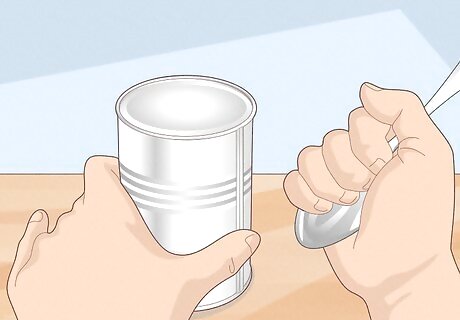
Place the can on a stable surface. Use one hand to hold it firmly in place while you work the spoon with your other hand.
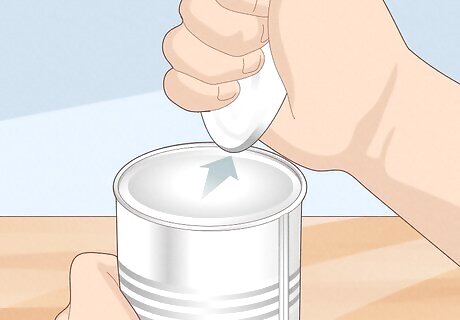
Position the tip of a spoon against the inner edge of the lid. The lid of the can will have a small, raised lip that has been crimped to seal the can closed. You want to position the spoon in a spot along the inside of this lip. Hold the spoon so that the inside of its bowl is facing the lid of the can. You need a metal spoon for this method. Any other material won't work.
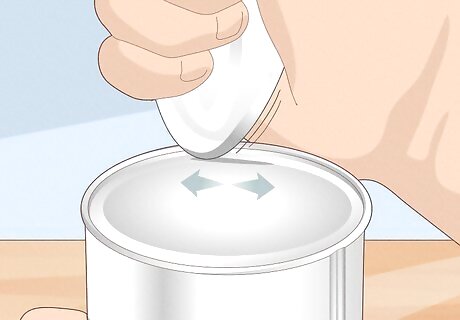
Rub the tip of the spoon back and forth. Work it over the same small area right where the edge of the lid is crimped. The friction from rubbing the spoon back and forth will begin to thin the can lid. Keep going until you have rubbed through the lid.
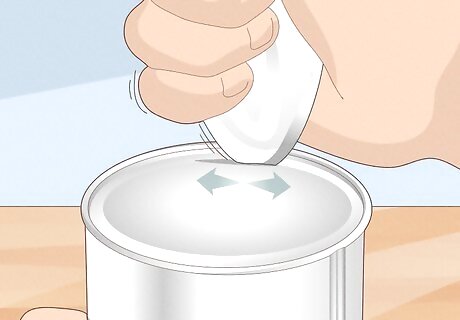
Scoot the spoon over and keep rubbing. Rub the spot next to the first area you rubbed. Keep going until you have rubbed through the lid. The hole you have made in the lid is now slightly bigger.
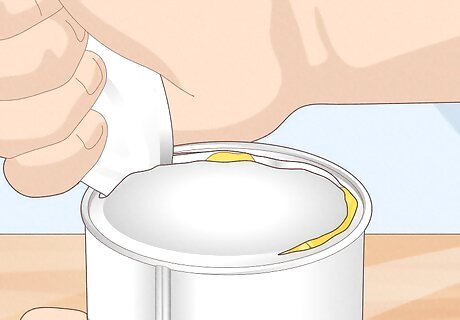
Continue around the edge of the lid. Keep scooting the spoon over and rubbing through the lid until you have circled the entire can lid. The lid should now be loose. Don't tip it upside down, or your food will spill out.
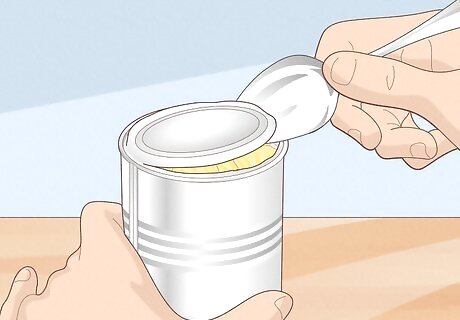
Pry open the lid. Dig the spoon under the edge of the lid. Pry the lid upward until it pops out of place. Carefully lift it away to reveal the food inside. If you find it difficult to pry off the lid with the spoon, try using a knife instead. You can use the knife to saw through any small parts of the lid that remain connected to the can. The lid will be sharp, so be careful not to cut your finger on its edge when you pry it off. Use your sleeve or a towel to protect yourself if necessary.
Alternate Method: Using a Pocket Knife
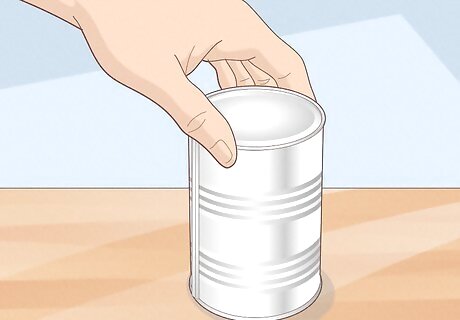
Place the can on a stable surface. A table at hip height is ideal. Stand over the can so you can access it easily.
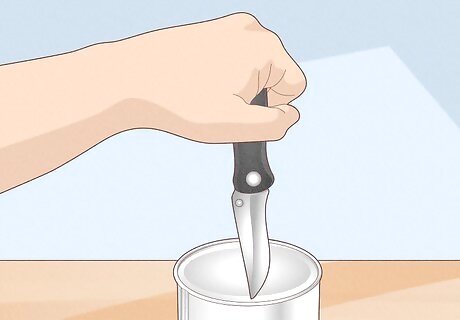
Position the tip of the knife against the inner edge of the lid. Hold the knife so that is vertical, rather than at an angle. Grip the handle such that your fingers won't be in the way of the blade if it slips. The back of your hand should be facing up. This method is more effective than attempting to saw the lid off using the blade of your knife. That will ruin your knife and potentially leave metal shavings in your food. Make sure the knife is completely extended and locked into place, so it won't slip. This method can also be done with a chisel, screwdriver, or another sturdy thin object similar to a pocket knife.
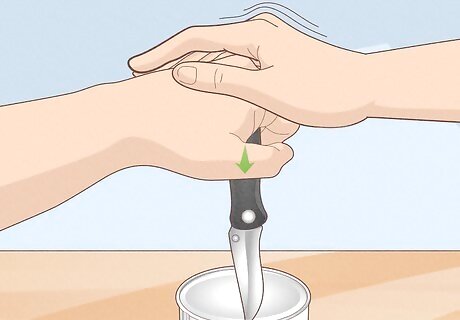
Lightly smack the back of your hand. Use your second hand to lightly smack the back of the hand that's gripping the knife handle. This gentle smacking motion will cause the tip of the knife to puncture the lid of the can. Do not smack too hard. You don't want to lose control of the knife. Smack with your hand open, and connect with your palm. This will help you maintain control.Safety Tip: Take extra care when using a knife to open a can to prevent injury. Using safety gloves is a good idea for this approach.
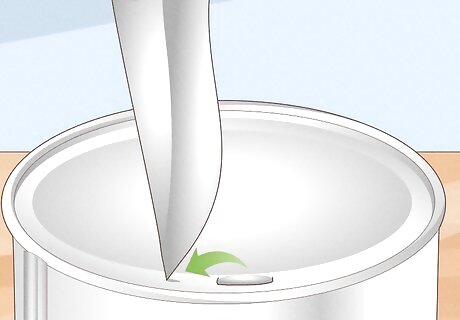
Scoot the knife over and make a new hole. Position the tip of the knife a few centimeters over and repeat the technique to puncture the can again.
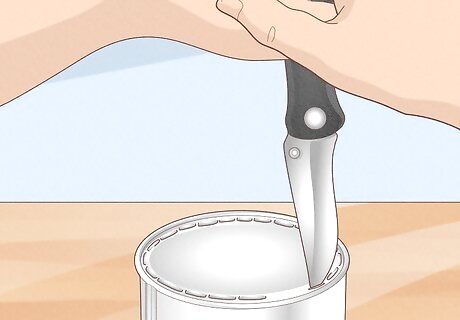
Continue until you've punctured holes around the edge of the can. Circle the entire lid, as you would with a can opener. The lid should now be loose.
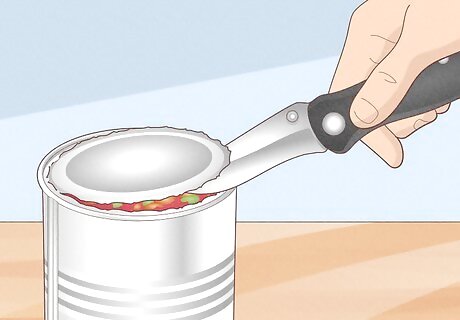
Pry off the lid. Slip the tip of the knife into one of the holes. Use it to pry the lid off. Gently pull the lid from the can. If necessary, use a smaller knife to saw through remaining connected parts of the lid. Cover your hand with a towel or your sleeve before prying off the lid. This will protect your hand from getting scratched by the lid.
Alternate Method: Using a Hard Rough Surface
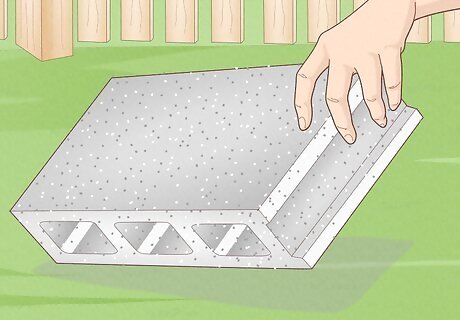
Find a hard, flat rough surface like a rock or a piece of concrete. A smooth rock won't create enough friction to puncture the lid of the can.
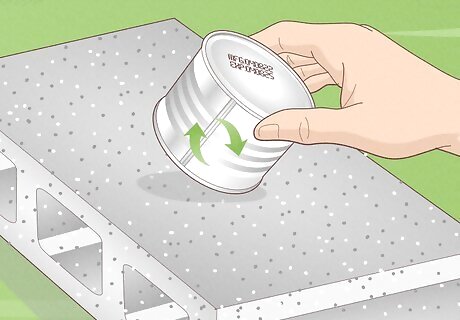
Position the can upside down against the rock. Positioning it upside down will allow you to break the seal, which is located on the top of the can.
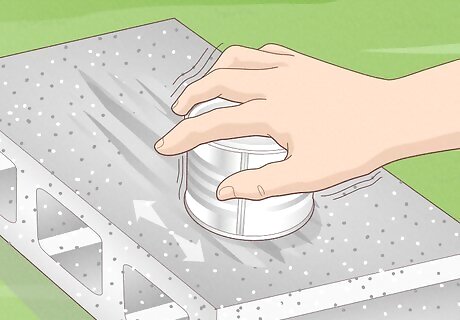
Rub the can back and forth over the rock. Applying firm downward pressure, use a scrubbing motion to create friction between the rock and the can. Keep going until you see moisture appear on the rock or on the lid of the can. Turn the can over to check it every so often. You want to stop as soon as you see moisture. This means the lid is thin enough to break through. Don't rub so hard that you rub right through the can lid. Your food will spill all over the rock.
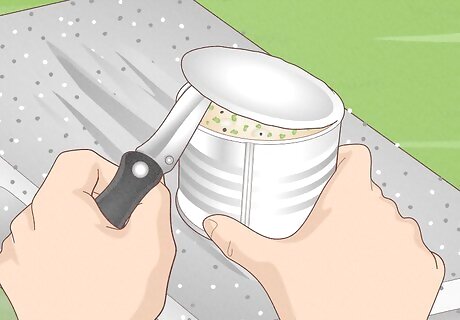
Use a pocket knife to pry open the lid. The seal should be thin enough to allow you to easily slide the blade into the can near the edge of the lid. Push up with the knife to gently pry off the lid. Finish pulling off the lid, then discard it. If you don't have a pocket knife, try using a spoon, a butter knife or another tool. Or find a rock you can use to knock the lid of the can inward. This isn't ideal, since you may contaminate your food with small bits of rock or dirt. When you pull off the lid, cover your hand with your sleeve or a towel so you won't cut yourself.
Alternate Method: Using a Chef's Knife
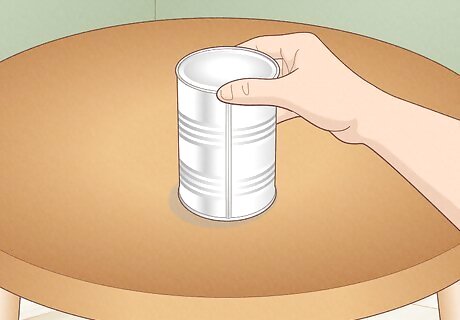
Position the can on a stable surface. A table as high as your hips is ideal. Do not place the can on your lap or in between your legs. The knife could slip and injure you.
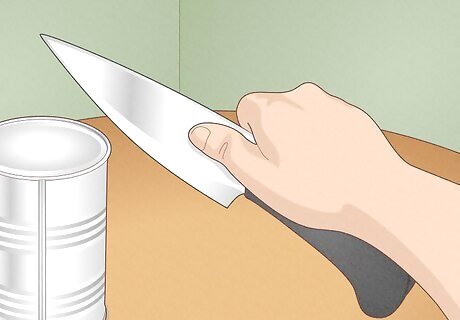
Hold the knife where the handle meets the blade. Grip the top of the knife with your palm directly over the joining place. Your fingers should rest against the side of the handle, safely away from the sharp edge of the blade. Make sure you have a firm grip. This method can be dangerous if your hand or the knife is slippery. Do not use this method with a knife smaller than a chef's knife. A chef's knife is a large, heavy knife that weighs more than a pruning or steak knife. You need the relatively heavy weight of the blade to effectively puncture the lid of the can.Safety Tip: Take extra care when using a knife to open a can to prevent injury. Using safety gloves is a good idea for this approach.
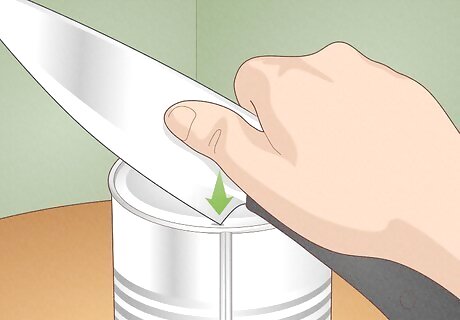
Position the heel of the knife against the inner edge of the lid. The heel of the knife is the place where the blade is widest. It's at the opposite end of the blade from the tip. Place it up against the raised lip at the edge of the can's lid. The heel should be centered right under the place where your palm is gripping the knife. Make sure it is firmly positioned against the edge of the lid, so it won't slip.
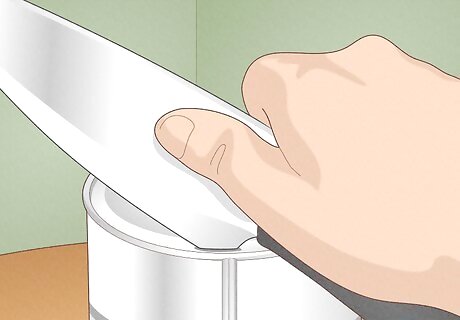
Press the heel of the knife into the can. Press down firmly so that it punctures the can, creating a small hole. If you have trouble puncturing the can, try standing up and leaning over it. Hold the knife in place with one hand. Place the other hand on top. Apply steady pressure with both hands and push down until the can is punctured. Do not strike the can to puncture it. The knife may slip and injure you. Instead, apply slow, steady pressure until the knife breaks through the can. Don't be tempted to use the sharp tip of the knife to puncture the can. The heel is more stable and less likely to slip. Also, if you use the tip you'll ruin the edge on your blade.
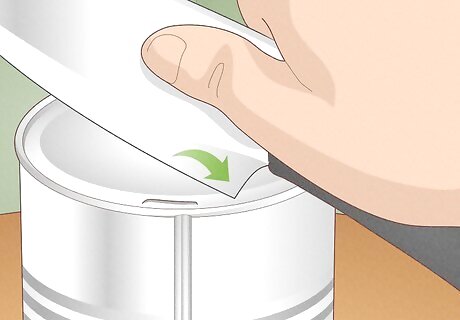
Scoot the knife over and make a new hole. Move it a few centimeters along the edge of the lid. Use the same technique to create another hole right next to the first one.
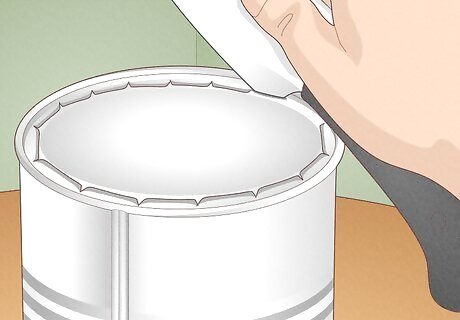
Continue until you've punctured holes around the edge of the can. Circle the entire lid, just as you would with a can opener. The lid should now be loose.
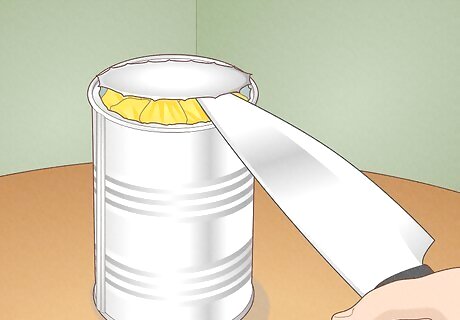
Pry open the lid. Insert the tip of the knife into one of the holes. Push up to pry off the lid. Be careful to point the edge of the blade away from your body so that it won't hurt you if it slips. Remove and discard the lid. If necessary, use a smaller knife to saw through remaining connected parts of the lid. Consider covering your hand with a towel or your sleeve before prying off the lid. This will protect your hand from getting scratched by the sharp lid.




















Comments
0 comment